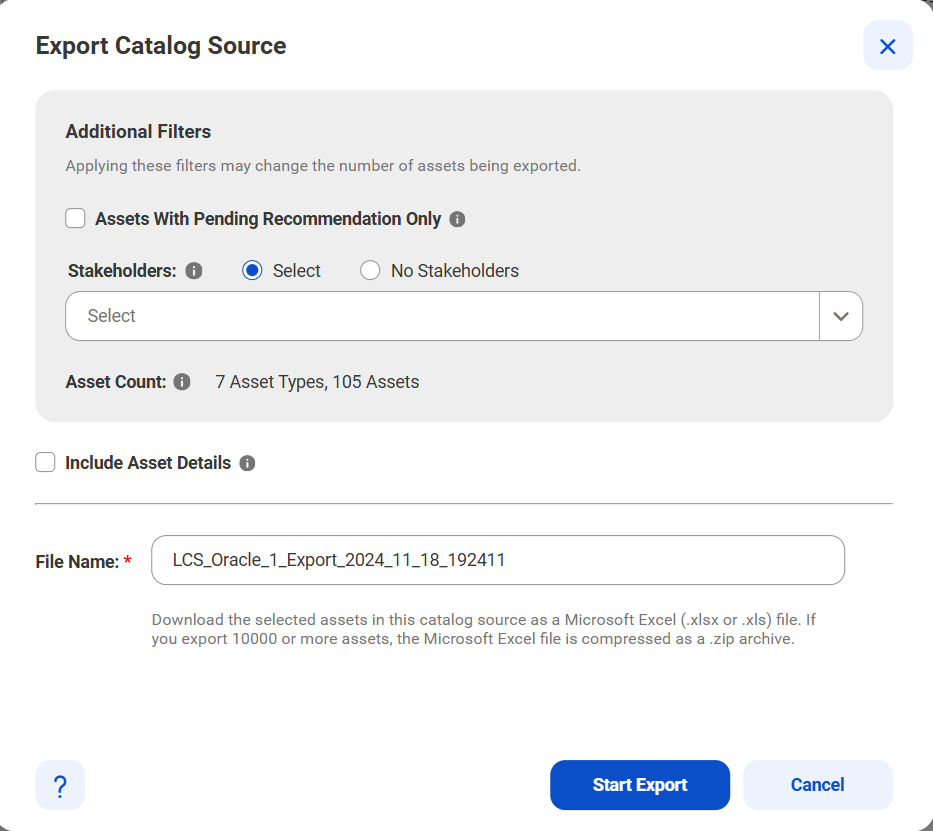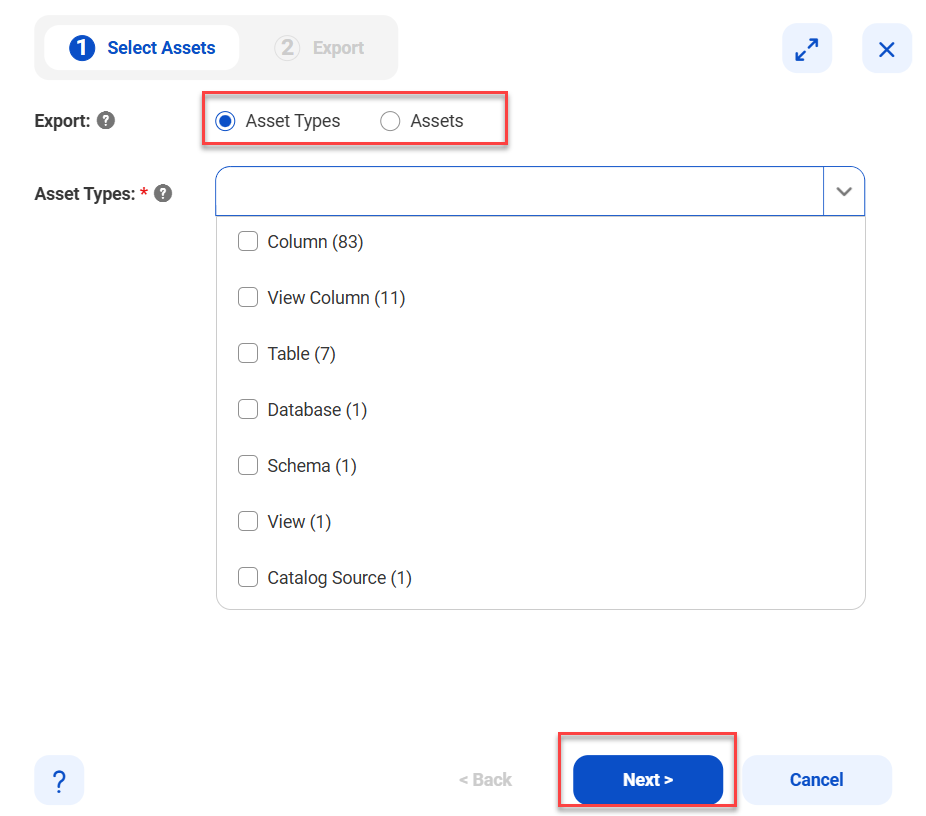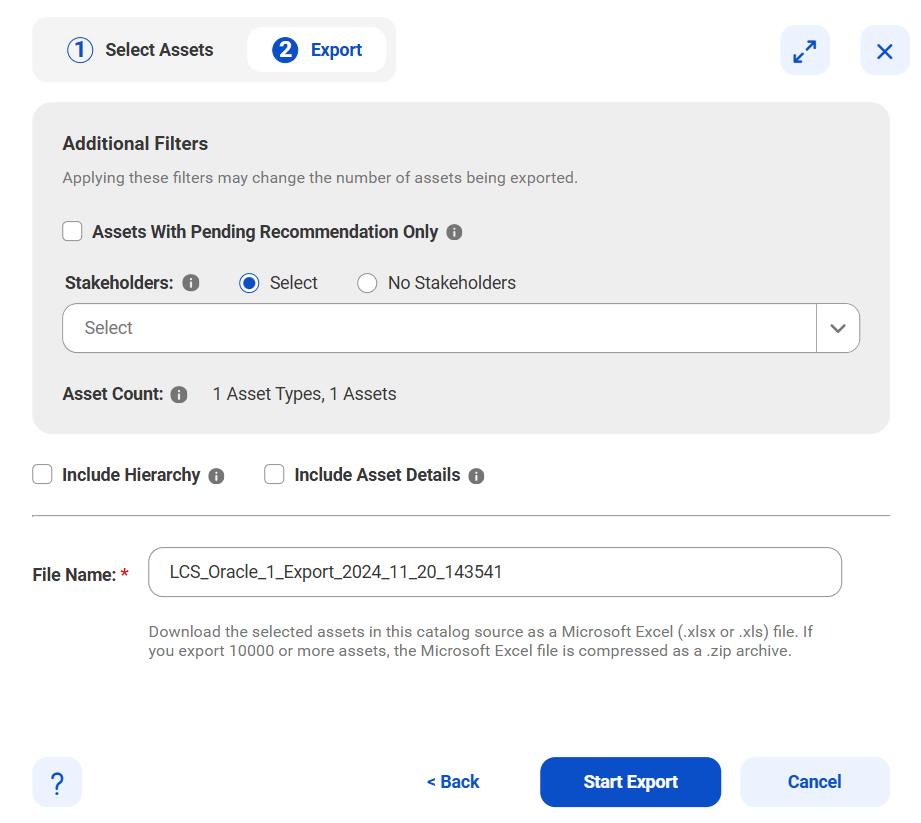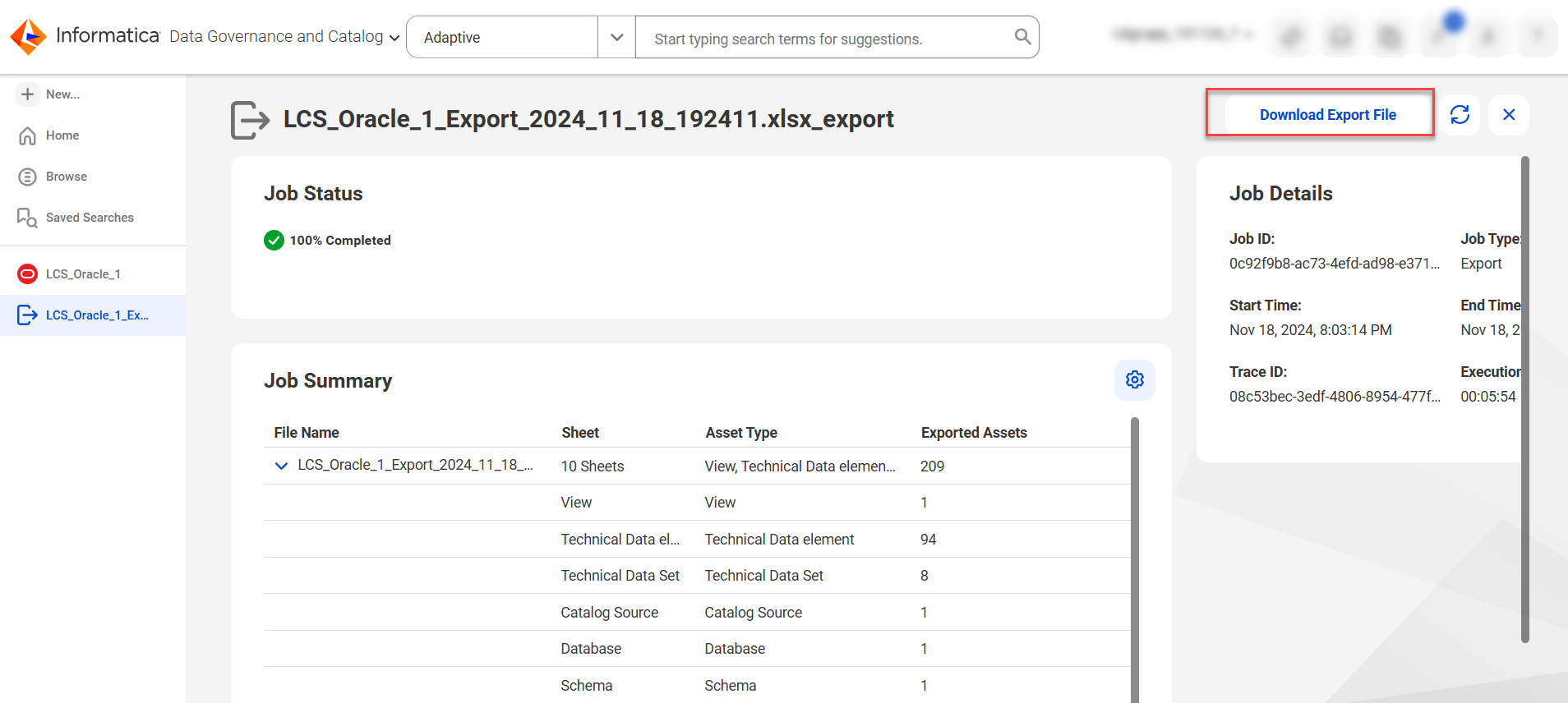1Open a catalog source and click the Export all or specific assets icon at the top right corner.

The Export All Assets and Export Specific Assets options appear.
2To export all assets in the catalog source, select Export All Assets.

3If you select Export Specific Assets option, you'll see a dialog box with Select Assets and Export tabs.
4Select at least one asset type or an asset, or both, and click Next.

5Enter a new file name or retain the system-generated file name.
6Optionally, select the following filters:
- - Assets With Pending Recommendation Only. Export assets only with pending glossary and classification recommendations that need your review.
- - Stakeholders. Select one or more stakeholders who are responsible or interested in this asset. If you want to export assets without any stakeholders, select No Stakeholders.
- - Include Hierarchy. Select if you want to export all assets in the hierarchy of the catalog source. You'll see this option only when you export specific assets from a catalog source.
- - Include Asset Details. Export the custom attributes and additional details of the technical assets.
7Click Start Export to export all assets from the catalog source.
This triggers an export job that you can monitor on the Job Status panel.

8After the export job is complete, click Download Export File on the Job Status panel to download the exported file.

The Job Status panel displays the job summary, details, and download link to export assets from the catalog source. The Job Summary section displays the list of asset types, number of sheets, and number of exported assets that are available in the downloaded Microsoft Excel file.
Note: The predefined batch size of the exported file is 10,000. If the results have more than 10,000 assets, the system compresses the export file as a .zip file. For example, if the search results have 90,000 assets, these assets are exported as a .zip file containing nine Microsoft Excel files, with each file containing 10,000 assets.
9Alternatively, you can also check the status of your export job on the Job Monitoring page.

10After the export job is complete, click Action > Download Export File next to the corresponding job on the Job Monitoring page to download the exported file. Click Action > Download Log if you want to download the logs file to know the job activities.

11You can also click the Notification icon on the Home page to monitor the job status. Click the URL to open the corresponding job page to know the job status.
Once the export job is complete, you'll receive notifications with a link to the corresponding job page in Data Governance and Catalog.